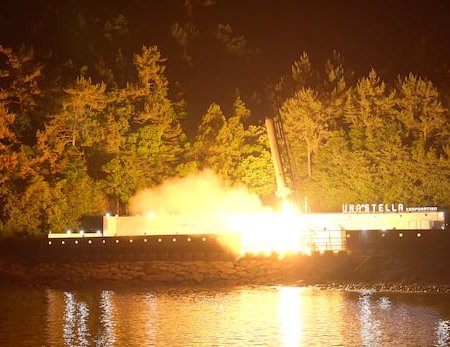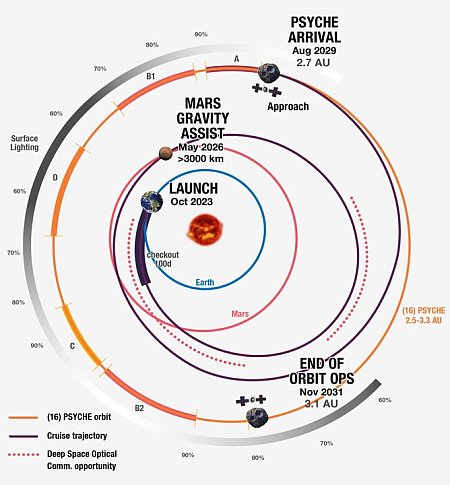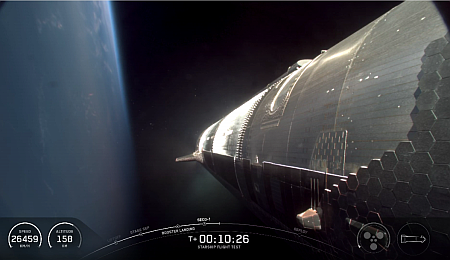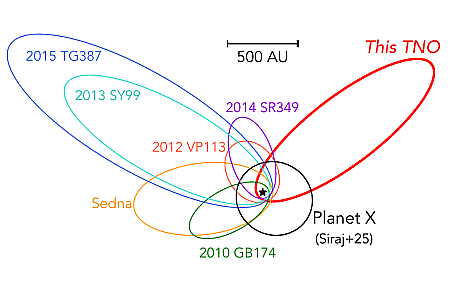Chinese pseudo-company completes successful hop test of rocket
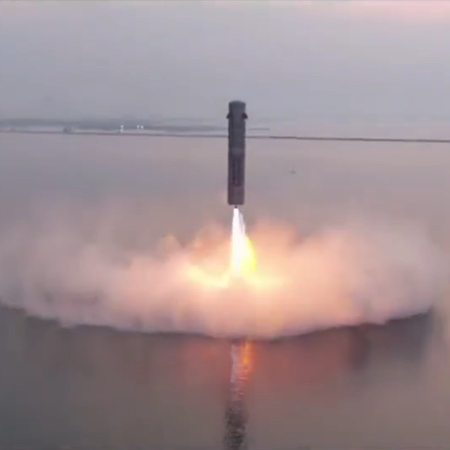
YXZ-1 completing soft splashdown vertically.
Click for movie.
The Chinese pseudo-company Space Epoch (also called SEpoch) announced today a successfully hop test yesterday where its prototype YXZ-1 grasshopper-type test prototype completed a vertical launch to an altitude of about 1.5 miles, shut down its engines, then relit them to achieve a soft splashdown over water.
The test article used thin-walled stainless steel and had a diameter of 4.2 meters, a total height of 26.8 meters and a takeoff mass of about 57 tons, according to Space Epoch. The test lasted 125 seconds and reached around 2.5 kilometers in altitude. The test article used Longyun methane-liquid oxygen engines provided by [pseudo]-commercial firm Jiuzhou Yunjian (JZYJ).
Sepoch says the test has laid a solid foundation for the first full flight of the YXZ-1, also known as Hiker-1 in English, later this year.
Without question China’s pseudo-companies as well as its official state space divisions are aggressively pursuing reusable rockets, far more aggressively than any companies (other than SpaceX) in the west. There are at least nine Chinese pseudo-companies or government agencies testing rockets that can land vertically (Space Epoch, Landspace, Deep Blue, Shanghai Academy of Spaceflight Technology, Chinese Academy of Sciences, Space Pioneer, Ispace, Galactic Energy, Linkspace), with eight having attempted hop tests with mixed results.
In the west, only SpaceX is flying reusable rockets. Blue Origin’s New Glenn is supposed to be reusable, but it has only launched once and on that flight its first stage failed to land successfully. The company has only done hop flights with its small suborbital New Shepard spacecraft. Rocket Lab is building its reusable Neutron rocket, but it also has never done any hop tests with that rocket. Stoke Space plans a completely reusable rocket, with the second stage returning as well, and has done one short hop test of a prototype of that stage. Other rocket companies are designing or developing such rockets, but none have done any hop tests.
In general China’s rocket industry appears far ahead in this race.
Hat tip to BtB’s stringer Jay.

YXZ-1 completing soft splashdown vertically.
Click for movie.
The Chinese pseudo-company Space Epoch (also called SEpoch) announced today a successfully hop test yesterday where its prototype YXZ-1 grasshopper-type test prototype completed a vertical launch to an altitude of about 1.5 miles, shut down its engines, then relit them to achieve a soft splashdown over water.
The test article used thin-walled stainless steel and had a diameter of 4.2 meters, a total height of 26.8 meters and a takeoff mass of about 57 tons, according to Space Epoch. The test lasted 125 seconds and reached around 2.5 kilometers in altitude. The test article used Longyun methane-liquid oxygen engines provided by [pseudo]-commercial firm Jiuzhou Yunjian (JZYJ).
Sepoch says the test has laid a solid foundation for the first full flight of the YXZ-1, also known as Hiker-1 in English, later this year.
Without question China’s pseudo-companies as well as its official state space divisions are aggressively pursuing reusable rockets, far more aggressively than any companies (other than SpaceX) in the west. There are at least nine Chinese pseudo-companies or government agencies testing rockets that can land vertically (Space Epoch, Landspace, Deep Blue, Shanghai Academy of Spaceflight Technology, Chinese Academy of Sciences, Space Pioneer, Ispace, Galactic Energy, Linkspace), with eight having attempted hop tests with mixed results.
In the west, only SpaceX is flying reusable rockets. Blue Origin’s New Glenn is supposed to be reusable, but it has only launched once and on that flight its first stage failed to land successfully. The company has only done hop flights with its small suborbital New Shepard spacecraft. Rocket Lab is building its reusable Neutron rocket, but it also has never done any hop tests with that rocket. Stoke Space plans a completely reusable rocket, with the second stage returning as well, and has done one short hop test of a prototype of that stage. Other rocket companies are designing or developing such rockets, but none have done any hop tests.
In general China’s rocket industry appears far ahead in this race.
Hat tip to BtB’s stringer Jay.

